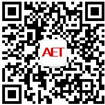无线能量传输
0赞Electromagnetic Induction(电磁感应) usually provides high power levels which can provide output of several watts (W) to several hundred KW. Large amounts of power can be transmitted by electromagnetic induction, but receiver must be located adjacent to the transmitter which means the terminal must have a battery. The effective range is probably 1cm or less.
SAE1773提供了一种参考的方式,此图出自其2009年的修订版本。
Resonance technology(磁共振) shares parts of both electromagnetic induction and radio reception, and would be appropriate in direct power supply to devices without batteries. It can directly supplies devices moving within a fixed area and provide max power of several KW also range of several meters.
此种方式相对较新,技术上有了很大的突破,各个地方都在做实验和产品。此图出自
关于以上两种的方式,目前SAE的“J2954”工作组正在对这两种方式,就安全性、低价格化和对环境的影响等方面进行审议。
Radio reception can only transmit about several dozen mW, making it impossible to recharge a handset in an hour or two, but sufficient to handle mobile phone stand-by power requirement. It is good for terminals for long stand-by times, with continuous charging in rooms.
以下的表格和图像出自:《Wireless Power Transmission and Charging Pad》,C.C. LEUNG,T.P. CHAN.....
这几种方法的频率和功率密度。




